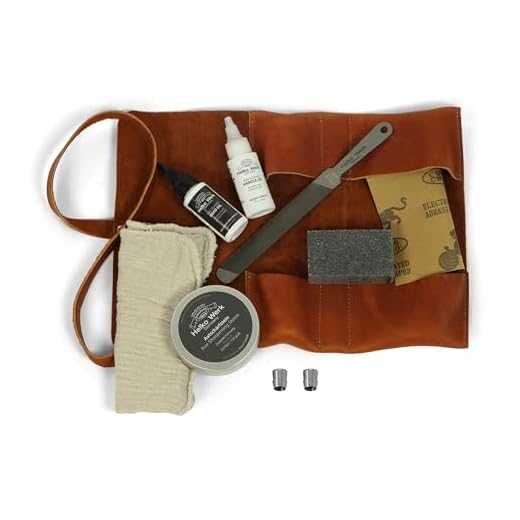




When it comes to surviving in the wild, having the right tools can make all the difference. One of the most essential tools is a reliable axe, which can be used for cutting wood, building a shelter, and even for self-defense. In situations where you don’t have access to modern tools, knowing how to make a stone axe can be a lifesaver.
A stone axe is a primitive tool that our ancestors used for thousands of years. It may not be as efficient or durable as a modern metal axe, but in a survival situation, it can still get the job done. Making a stone axe requires some basic knowledge of primitive tool making techniques and a few simple materials that can easily be found in nature.
Before you start making your stone axe, it’s important to find the right materials. Look for a large, sturdy rock that can serve as the axe head. Ideally, it should be a dense rock like flint or chert, as these materials are easier to shape and have a sharp edge. You will also need a piece of wood for the handle, which should be sturdy and about the length of your forearm.
What is a stone axe?
A stone axe is a primitive tool made by humans for thousands of years. It is a simple tool consisting of a stone head attached to a wooden handle. The stone head is typically made from a hard stone such as flint or obsidian, which is shaped into a blade or cutting edge. The wooden handle is typically made from a sturdy branch or piece of wood that is carved and shaped to fit comfortably in the hand. Stone axes were used by early humans for a variety of tasks, including chopping wood, hunting, and building shelter.
Types of stone axes
There are different types of stone axes, each with its unique design and purpose. Some common types include:
1. Hand axe
A hand axe is a small, handheld stone axe, usually shaped like a tear drop or pear. It is typically used for precision tasks such as shaping wood or cutting small branches.
2. Fire axe
A fire axe is a larger stone axe designed for chopping wood and building fires. It has a longer handle and a heavier stone head, allowing for greater force and impact when chopping.
Stone axes are simple but effective tools that played a crucial role in early human survival. They continue to be used by survivalists and enthusiasts today for their versatility and durability.
Importance of a stone axe in survival situations
A stone axe is an essential tool for anyone facing a survival situation. Its importance cannot be overstated, as it serves a multitude of functions that can mean the difference between life and death in the wilderness.
1. Provides a versatile cutting tool
A stone axe is primarily used for chopping and cutting various materials. Whether it be wood for shelter, rope for making traps, or even food, the sharp edge of a stone axe allows for precise and efficient cutting, making it an invaluable tool in a survival situation.
2. Enables the construction of shelter and fire
In a survival situation, shelter and fire are vital for warmth, protection, and comfort. A stone axe can be used to gather and shape timber, allowing you to build a sturdy shelter to shield you from the elements. Additionally, it can be used to strike a spark on a piece of flint, enabling you to ignite a fire and provide heat.
3. Assists in hunting and gathering
With a stone axe, you can fashion spears, arrows, and other hunting tools from wood and other natural resources. This allows you to better hunt and gather food, increasing your chances of survival. The ability to fashion tools also provides a sense of self-reliance, empowering you to navigate through nature’s challenges.
4. Serves as a self-defense weapon
Unfortunately, in survival situations, encounters with dangerous animals or individuals may occur. A stone axe can be used as a defensive weapon, providing you with a means to protect yourself from potential threats. Its weight and sharpness make it a formidable tool in close encounters.
- In conclusion, a stone axe is an indispensable tool in survival situations. Its versatility, ability to cut, aid in construction and gathering, and its potential for self-defense make it a crucial tool for anyone facing the challenges of the wilderness.
Choosing the right stone
When it comes to making a stone axe for survival, choosing the right stone is crucial. Not all stones are suitable for creating a sharp and durable axe head. Here are a few factors to consider:
Type of Stone
The type of stone you choose will greatly impact the effectiveness of your axe. Ideally, you should select a stone that is hard and dense. Some common types of stones used for making stone axes include flint, basalt, and obsidian. These stones are known for their ability to hold a sharp edge, making them ideal for axe heads.
Size and Shape
Another important factor is the size and shape of the stone. You want to find a stone that is large enough to make a sufficient axe head, but not too large that it becomes cumbersome to handle. The shape of the stone should also be considered, as you want a stone that has a relatively flat surface where you can shape the axe head.
It’s also worth noting that the size and shape of the stone will determine the overall weight and balance of your axe. Aim for a stone that feels comfortable and well-balanced in your hand.
Tip: Look for stones along riverbanks or in areas with loose rocks, as these tend to have a higher likelihood of finding suitable stones for axe making.
By carefully choosing the right stone for your stone axe, you can ensure that it will be effective and reliable in a survival situation.
Identifying suitable stones for making a stone axe
Making a stone axe can be a vital skill for survival in the wilderness. A good stone axe is strong, durable, and functional. However, not all stones are suitable for making a stone axe. It is important to identify the right kind of stones to ensure the effectiveness of your tool.
1. Hardness
When selecting stones for making a stone axe, hardness is a key factor to consider. Ideally, you should look for stones that are hard enough to withstand the force and pressure exerted during chopping and cutting. Quartzite, basalt, granite, and chert are some examples of hard stones that can be used for making a stone axe.
2. Grain size and structure
The grain size and structure of the stone is another important aspect to consider. Stones with fine-grained structures are usually more suitable for making stone axes because they tend to have better strength and durability. Look for stones with a tight and uniform grain structure as they are less likely to fracture or break easily.
Additionally, avoid stones with cracks or fractures as they can weaken the structural integrity of the stone axe. Examining the stone closely and ensuring its overall condition is crucial before proceeding with axemaking.
Note: It is important to prioritize safety when making a stone axe. Make sure you have the necessary skills and knowledge to handle tools and stones effectively to prevent accidents or injuries.
By carefully selecting suitable stones for making a stone axe, you can ensure that your tool is strong, durable, and capable of meeting your survival needs in the wilderness.
Characteristics of a good stone for a stone axe
A stone axe is a vital tool for survival in the wilderness, but not just any stone will do. When selecting a stone for your axe, it is important to consider the following characteristics:
1. Hardness: The stone should be hard enough to withstand the force and pressure of chopping wood. A soft stone will not hold up, and you risk breaking your axe head.
2. Toughness: In addition to hardness, the stone should also be tough. This means it should be able to absorb and dissipate the shock and impact of each strike. A brittle stone will easily fracture and render your axe useless.
3. Shape: Look for a stone that has a flat or slightly convex shape. This will make it easier to attach the stone to the wooden handle of your axe. Avoid stones with irregular shapes or sharp edges.
4. Size: The stone should be large enough to create a substantial axe head, but not too large that it becomes cumbersome to handle. Aim for a stone that fits comfortably in the palm of your hand.
5. Weight: A good stone for a stone axe should have a reasonable weight. It should be heavy enough to provide sufficient momentum when swinging, but not so heavy that it becomes difficult to control.
6. Availability: Lastly, consider the availability of the stone in your environment. Look for stones that are abundant and can be easily found. This will ensure that you can replace your axe head if it becomes damaged or worn out.
By considering these characteristics, you can select a suitable stone for your stone axe that will serve you well in your survival endeavors.
Gathering other necessary materials
Once you have selected a suitable stone for your axe, you will need a few other materials to complete the process. These materials are essential for creating a functional and durable stone axe that will aid in your survival.
1. Wooden Handle
A sturdy wooden handle is vital for your stone axe. Look for a straight and strong piece of wood that is approximately 2-3 feet long. Ideally, the wood should be hardwood, such as oak or hickory, as it will provide the required strength and durability.
2. Cordage
In order to secure the stone head to the wooden handle, you will need cordage. Choose a strong and durable material, such as paracord, natural fiber rope, or even strips of animal sinew. This will ensure that the stone head is securely attached to the handle and does not come loose during use.
It is important to note that gathering materials for your stone axe requires some skill and knowledge. Make sure to select suitable materials that can withstand the force and pressure exerted during use. Properly chosen materials will ensure the longevity and functionality of your stone axe.
| Materials | Properties |
|---|---|
| Hardwood | Provides strength and durability |
| Paracord, natural fiber rope, or animal sinew | Ensures secure attachment of stone head to handle |
Selecting the right wood for the handle
When it comes to making a stone axe for survival, selecting the right wood for the handle is crucial. The handle of the axe is responsible for transferring the force from your swing to the stone head, so it needs to be strong and durable.
Here are a few factors to consider when choosing the wood for your axe handle:
1. Strength and Durability
Look for wood that is known for its strength and durability. Hardwoods like oak, hickory, or ash are excellent choices as they are tough and can withstand the impact of repeated strikes.
2. Straightness and Size
Choose a piece of wood that is straight and free from knots or cracks. A straight handle allows for better control and accuracy when using your stone axe. Additionally, make sure the wood is thick enough to provide a sturdy grip.
Note: Avoid using wood that has been treated with chemicals or is prone to splintering as it may compromise the integrity of your axe handle.
Remember, the wood you select for your axe handle will directly impact its performance and longevity. So take your time, choose wisely, and enjoy the process of crafting your very own stone axe handle for survival.







